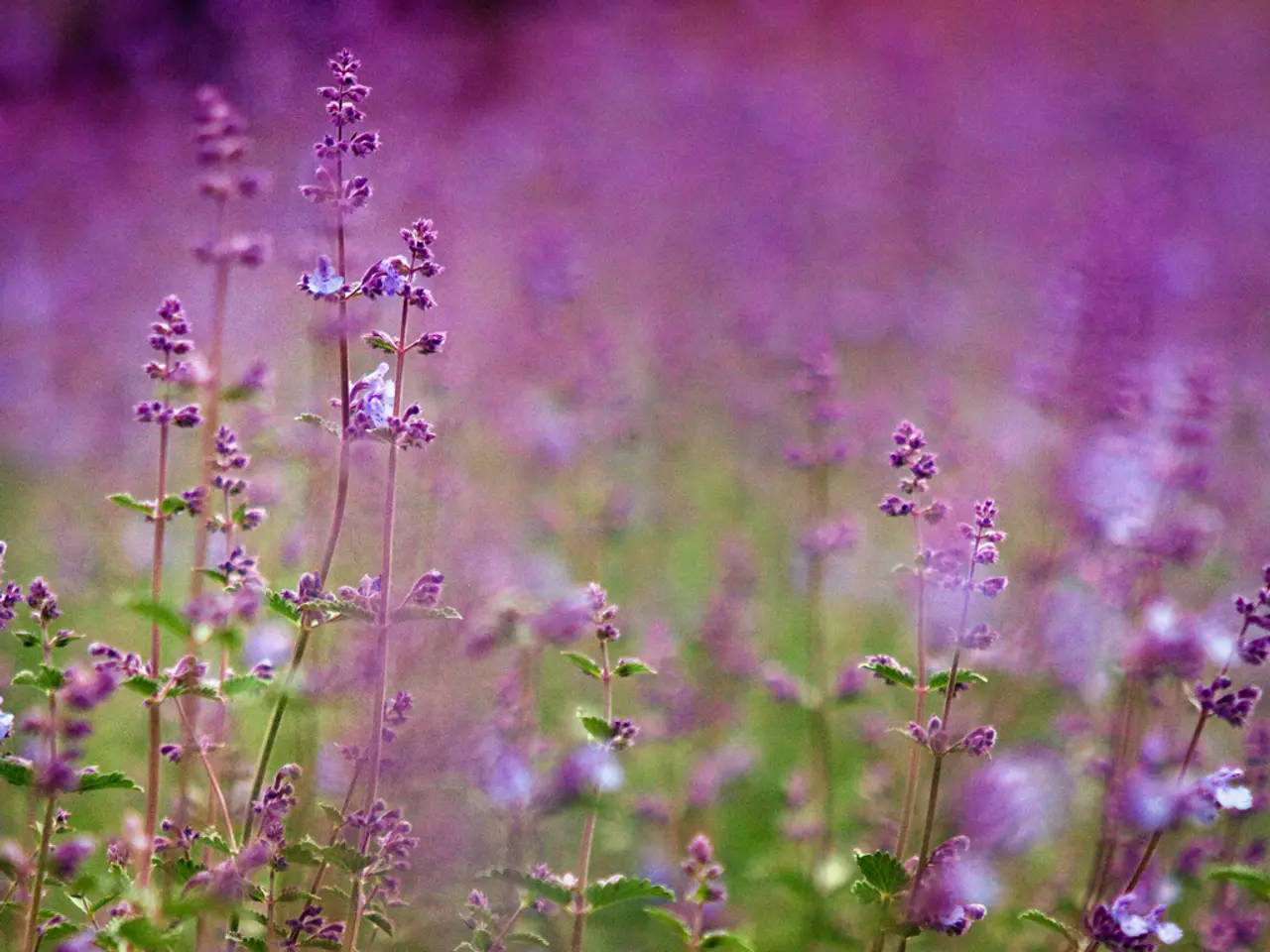Cultivating 5 Distinctive Lavenders for Stunning Aroma and Attractive Blossoms
Lavender, known for its fragrant purple blooms and calming aroma, is not just a popular choice for gardens and aromatherapy. This versatile plant also has a place in the kitchen, lending its distinctive flavour to a variety of dishes.
Edible Lavender Varieties
When it comes to edible lavender, there are a few primary types that stand out. Here's a quick overview:
- English Lavender (Lavandula angustifolia): This is the preferred choice for culinary purposes due to its mild, sweet, non-bitter flavour. It's hardy to USDA Zone 5 and blooms twice a season. Some popular varieties include 'Hidcote' and 'Munstead'.
- French Lavender (Lavandula dentata): While it can be used in cooking, French lavender's pine-like scent and more resinous flavour make it less ideal compared to English lavender. It's better suited to warmer areas and blooms mid to late summer.
- Spanish Lavender (Lavandula stoechas): Less common in cooking, Spanish lavender has a strongly pine-like aroma. It thrives in hot, dry climates and is drought-tolerant.
- Portuguese Lavender (Lavandula latifolia or Spike Lavender): Not typically used for culinary purposes due to its bitterness and strong camphor flavour. However, it's praised for its ability to attract bees and other beneficial insects.
- Lavandin (Lavandula x intermedia): This is a type of hybrid, often created by crossing English lavender with another species. It's generally avoided in cooking due to its bitterness and soapy taste, despite its larger, longer flower stems.
Key Culinary Notes
- English lavender is the best choice for edible uses because it has the most pleasant flavour with minimal bitterness or soapiness.
- Other types such as French, Spanish, and Portuguese lavenders are less preferred for culinary use because they can impart bitter or resinous flavours.
- Lavandin, a hybrid, tends to be too bitter and soapy for culinary use.
- Culinary lavender should be used sparingly to avoid overpowering flavours; it pairs well with fruits (strawberries, lemon), herbs (rosemary, thyme), and mild meats (salmon, pork).
Growth Differences
Each lavender type has its own growth requirements, mainly depending on climate hardiness and drought tolerance:
- English Lavender: Hardy to Zone 5, it often blooms twice a year and comes in compact, variable sizes.
- French Lavender: Suited for zones 7-9, it's a compact shrub that's good for containers and blooms mid to late summer.
- Spanish Lavender: Thrives in warmer, drought-prone areas and has a more drought and heat tolerant growth habit, with a pine-like aroma.
- Portuguese Lavender: Grows well in warm, dry regions and has broad leaves.
- Lavandin: This larger plant blooms once a year and is suited for warmer areas.
In summary, for culinary use, English lavender is the best choice due to its milder, sweeter flavour. Other lavender types are primarily ornamental or suited to specific climates but are less desirable in cooking.
In the realm of edible lavender, English Lavender, specifically Lavandula angustifolia, is preferred for its mild, sweet, and non-bitter flavor, making it ideal for culinary purposes. When considering home gardening and lifestyle choices, English Lavender's inclusion in kitchen dishes and its pleasant aroma in home-and-garden settings makes it a versatile and delightful choice.




